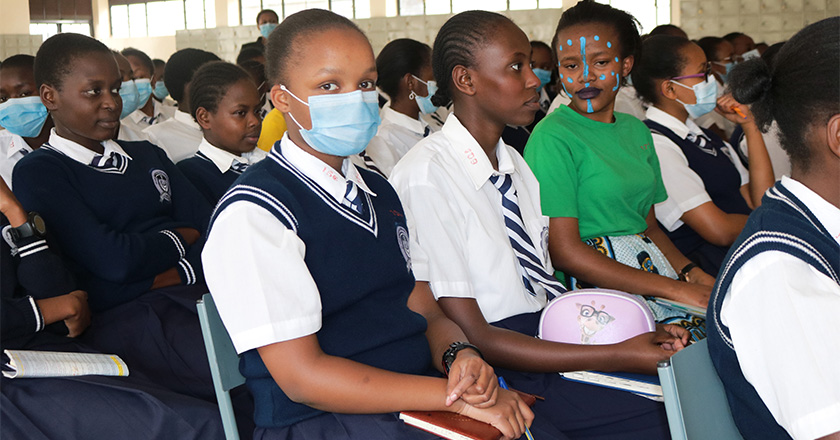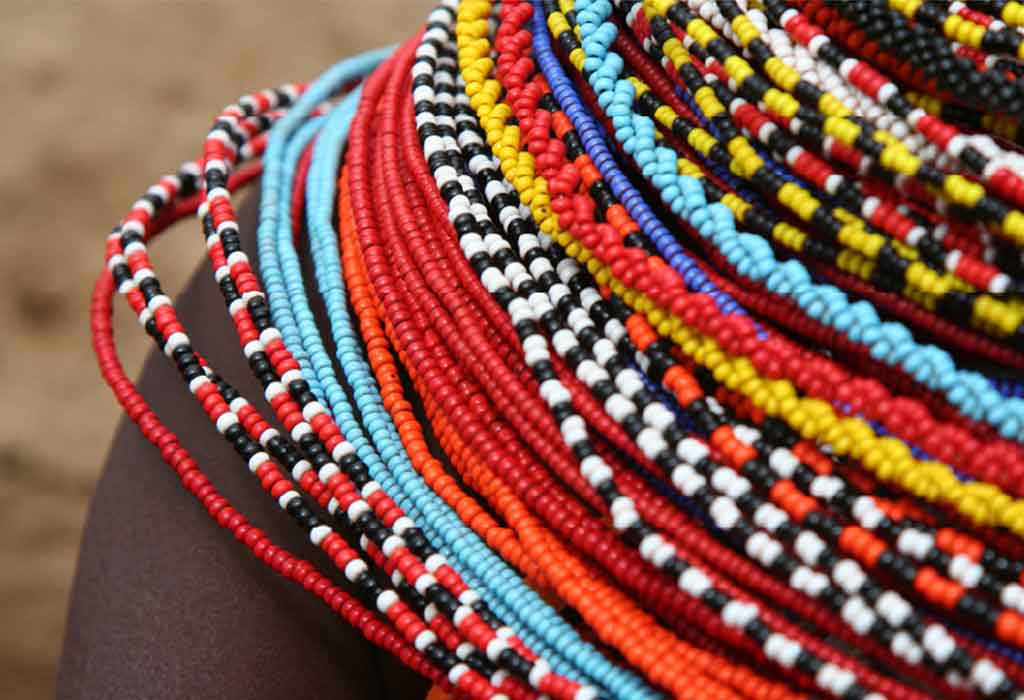Media Room
Catalysing the Future of Education through Corporate Giving

By James Gatere, Head of I&M Foundation
As each year ends and another begins, there is heightened unease as families await examination results for students and scramble to pool resources so their wards can transition to the next level in their education journey. These young scholars and their guardians look anxiously towards their next phase of life hoping that their dreams and ambitions will have space in our collective successful future. As we have seen it played out over and over, many feel hopeless, especially those who are faced with financial constraints limiting their access to learning opportunities. For many living in underserved communities, this is their harsh reality.
Each year, we observe the International Day Education. 2024 is no different, and the theme for this year is “Learning for Lasting Peace”. It is important to note that schools are more than just institutions of learning. They are wellsprings of camaraderie, centres for mental and physical health development, a place to gain nutrition and the perfect environment for positive character building.
When learning curriculum frameworks are developed with equality, inclusivity, fairness, and openness at their core, education can become a foremost agent for peace. Wholesome education brings down socioeconomic and sociocultural barriers preparing the ground for diverse yet cohesive communities.
Africa has had varied histories of peace and conflict, through local, civil, and international disputes. What has emerged in the recent decades as our populations get younger, is the need for more aggressive education programmes so as to drive development and inculcate in the younger generations a deep sense of cohesion which in turn will contribute to peace and stability. Further to this, a population is less likely to be incited to take up arms when they are skilled and engaged in commerce and industry.
Conversely, the effects of conflict on education are clear. According to the Global Peace Index 2023, the average level of global peacefulness deteriorated for the 13th time in the last 15 years with 2022 recorded as the deadliest year since the Rwandan Genocide in 1994.
In the wake of significant conflict, education facilities and systems are among to face disruption and recovery is never easy even in post conflict scenarios.
Emerging from the fog of the COVID-19 pandemic, and combined with insecurity and conflict in some areas, most schools and governments through Kenya learned to adapt technology and new teaching techniques to keep our learners engaged and on track with their curriculum.
However, no one can ever predict the beginning or end of such crises, and it is important to intervene with measures that enable the continuity of educational services in the face of such disruption.
The state of enrolment and transition rates from primary to secondary level.
According to the Basic Education Statistical Booklet (2020) by the Ministry of Education (Kenya), the enrolment of primary school learners stood at 10,076,828 while secondary school learners amounted to 3,569,279. The survival rate was 92.9% for Standard 6 students, while 96.4% first grade secondary learners made it to the final grade.
Delving further into data, The Kenya National Bureau of Statistics showed that the decrease in 2020 as shown above was attributed to the COVID-19 pandemic. This was a direct hit on the success of the implementation of government’s policy of ensuring 100% transition from primary school to secondary school. The study showed a 5.7% drop as schools reopened in March 2021, with 233,300 students not resuming learning.
Beyond the pandemic effect, the then Cabinet Secretary of education, the late Prof. George Maghoha spoke to media, indicating that the department’s interactions with parents showed poverty as the 2nd indicator for a reduced transition rate to secondary school in 2021, noting that over 50% of the students were able to enroll after scholarships were offered.
Scholarships are a significant contributor to the success of students and corporate philanthropy contributes greatly to this. Looking back to the era of Kenyan educational airlifts in the 1960s, that gave birth to some of the best minds of our country, we can be inspired to continue in the same vein, incorporating education into our corporate giving.
The success stories of these students and many others across the country who benefit from scholarships is only testament to the fact that there remains a huge gap in financing education.
Looking at the tertiary and university level, statistics from the National Treasury’s Education Sector Report of 2022 compares FY 2019/20 to FY 2021/22 showing that overall enrolment in Public TVET institutions increased from 217,017 297,505 in the respective periods.
There was increased enrolment at the university level too for the same period: from 568,653 to 620,480 representing a 9% growth.
What is significant in this period is the funding, with the number of undergraduate students who received loans in universities at 243,084 in FY 2019/20, decreasing to 229,727 in FY 2020/21. However, post-pandemic, the number increased to 244,552 in FY 2021/22.
The report shows direct linkages to emerging issues and challenges inherent in the education sector, including disparities in access to education and training based on marginalized regions, and recommending the enhancement of collaborations in global citizenship and peace education, for prevention of threats to the welfare and security of children.
At I&M Foundation, we retain our commitment to enhance education through outcomes that ensure inclusivity and equitable quality of education, improving self-reliance and gainful livelihoods for Kenyans, embodied in the Sustainable Development Goal 4 on Education and Skill Development. From 2018 to date, 555 students have benefitted from scholarships at various levels: secondary school, tertiary and university learning.
In 2018, I&M Foundation was instrumental in the establishment of St. Ann’s Suresh Raja Girls High School in Kairi Village, Kiambu County. The school was established to reach out to young girls disadvantaged by their family setups and who were facing little or no emphasis for education. The bank financed 100% of the building of the school, and continues to provide scholarships to needy, deserving students in the school.
Cognizant of the fact that 36% of Kenya’s school population comes from underserved communities, this drove the impetus to develop a strategic partnership to create a school that not only focuses on academic skills, but the mentoring, growing and impact of well- rounded students in a conducive learning environment. To date, we have actioned plans through the contribution of KES 236,553,370 to the school.
Furthermore I&M Bank’s management team provides academic and moral mentorship sessions to the students through mentorship and life skills program facilitated by the I&M Foundation.
Our partnership at Strathmore University also extends for more than a decade, allowing us to provide scholarships to 15 bright and financially challenged students to undertake various under-graduate programs. As they graduated, this program has come full circle with the alumni participating in transformative projects within the institution and providing mentorship to current students.
The Palmhouse Foundation have also been instrumental in partnership, creating opportunities for students at various levels and elevating them to seek higher education in reputable institutions across the world. Our support has provided for 210 bright but needy students through financing their secondary education and providing mentorship through our staff engagement.
In addition, we have various Skills Development programs with communities across Kenya, improving financial and life skills for many to empower them for self-reliance and productivity to improve their livelihoods. These programs empower members to contribute positively for their families as income earners, and in return, this allows them to engage in less conflicting activities in the fight for scarce resources in their area. Our demonstrated impact in partnership with the Maa Trust has changed the lives of 574 women who are the backbone of a beading project, giving them opportunity to raise their skill levels for international trade standards, and thereby bringing more resources to their households.
We are reminded that these students are looking not just for opportunities for the future but have a greater need to continue their path of learning at various levels. Education enables us to foster critical thinking, open avenues for dialogue and create growth and economic opportunities for individuals and communities.
The responsibility to deliver quality and inclusive education for more integrated and peaceful societies cannot be left to governments alone. Non state stakeholders too must answer the rallying call and invest in education. As corporates, it is to our benefit that we play our part in creating a transformative learning experience, equipping learners with essential knowledge, values, attitudes, skills, and behaviors to emerge as catalysts for peace within their communities.
After all, this is the workforce of the future, and unless we make inputs to their development and the stability of our operating environments, our survival is also at risk.
